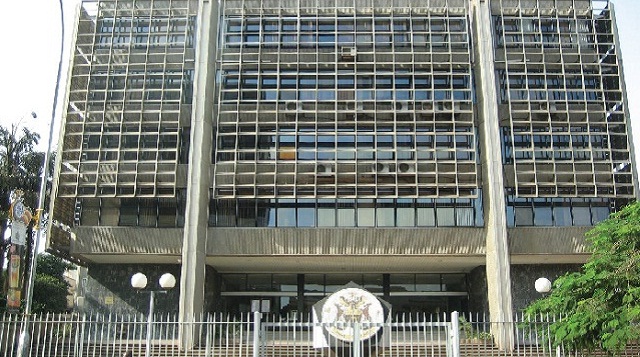
Outlook remains overcast by a mutating virus
| THE INDEPENDENT | Uganda’s economy has been struggling for some time now since the outbreak of coronavirus but the government and the private sector are coming up with numerous options to reverse the trend.
On Oct. 20, the government released Sh 5.8trillion for the second quarter expenditure, representing 26% of the approved budget (excluding external financing, appropriation in aid and public debt) a step intended to stimulate demand.
Ramathan Ggoobi, the permanent secretary in the Ministry of Finance, said the release of funds for the second quarter prioritised expenditure in; health and social protection, agriculture and industry, and judiciary and legislation which are key to economic recovery.
Meanwhile, corporate firms, are unveiling customer demand focused campaigns, which according to experts, could potentially have a positive impact on aggregate demand and eventually economic growth.
For instance, Stanbic Bank customers shopping on Jumia using visa card have been promised free delivery of their goods while Centenary bank has promised a 20% off their order.
Stanbic has also unveiled low interest rate loans of 15.5% compared to the market interest rate of 18% for specific loans for government health workers as well as signed a partnership agreement with Kampala City Traders Association to support the group import goods from China and other Asian markets with ease.
Stanbic Bank Chief Executive, Anne Juuko, said the bank is committed to offering affordable loan and related financial products to support the economy to quickly recover from COVID-19 hit in line with their purpose – Uganda is our home, we drive her growth.
This development comes as the Bank of Uganda Governor, Emmanuel Tumusiime Mutebile, maintained the central bank rate at 6.5% geared towards accelerating demand and support quick recovery of the economy.
“The monetary policy committee assessed that inflation remains benign, that the risks to economic growth outlook are skewed to the downside and that there remains considerable excess capacity in the economy,” Mutebile said.
He said the second wave of the COVID-19 pandemic interrupted the recovery of the economy and real GDP recovery is expected to have declined in the September 2021 quarter as a result of the COVID restrictions, although by less than the first national lockdown in the second quarter of 2020.
“With the ebbing of the second wave, a phased relaxation of pandemic related restrictions and improving vaccine coverage, economic activity is gradually normalizing,” Mutebile said.
The high frequency indicators of economic activity for August and September 2021 suggest that the economy is pulling out of the COVID-19 second wave impact, Mutebile further said in the detailed monetary policy report.
However, Mutebile said, some contact dependent sectors that faced the brunt of the pandemic continue to face difficult conditions.
The virus continues to pose uncertainty in the near-term economic outlook, according to Mutebile.
In addition, he added, economic growth will depend on the release of pent-up demand, a boost to investment activity from the government’s focus on infrastructure and support to sectors that have been more adversely affected by the pandemic and accommodative monetary conditions.
Economic growth is expected in the range of 3.5%-3.8% in FY2021/22 up from around 3% recorded a year before.
However, Mutebile said, as vaccination rates increase further and the health-related restrictions are released, the economy is expected to bounce back strongly to 5.5% – 6% in FY2022/23, increasing to 6.5-7.5% in the medium term (2-3 years).
According to BoU, a rebound of economic activity will be sustained by an acceleration in private consumption, strong growth in external demand, a gradual return of tourism and foreign and private domestic investment in the oil sector.
The outlook remains overcast by the future of the pandemic especially by a major mutation of the virus that could severely undermine vaccine effectiveness and delay both domestic and global economic recovery, according to the MPR.
It adds that, considerable risks exist regarding the longer-run economic impact of the COVID-19 pandemic.
In addition, private sector credit remains sluggish due to perceived risk that continues to significantly impair private investment, compromising the quality of financial market information and lenders’ ability to access the viability of borrowers and investment projects.
In addition to spillovers from the rising commodity prices especially of crude oil and other inputs, global supply chain disruptions could restrain economic growth in the near term.
Relief factors
Inflation has been largely contained within the policy targets with headline and core inflation averaging 2.3% and 3.1%, respectively in the 12 months to September 2021, which is below BoU’s medium term target of 5%.
However, notwithstanding the COVID-19 restrictions and the recent exchange rate depreciation pressures, forecasts indicate that inflation will remain within 5% policy target as excess capacity continues to exert downward pressure on prices.
But uncertainty around the inflation projection remains high. Global producer price and food price inflation have risen sharply in the recent months and could persist.
Additionally, international commodity prices especially oil and other input prices, have been on an upward surge since May 2020 and could rise beyond what the current projections assume, BoU warns.
It adds that these developments could accentuate domestic cost pressures. Also, the risk of currently elevated inflation in most of the advanced economies could necessitate an early exit from accommodative monetary policies.
The resultant heightened volatility in global financial markets could lead to capital outflow and exert a stronger weakening of the shilling, while the economy is still at a relatively early stage of recovery.
On the downside, a faster resolution of global supply chain disruptions, softer international commodity prices, and another round of good food crop harvest could cause inflation to remain subdued.
Mutebile also noted that the BoU credit relief measures expired at the end of September, but BoU shall on a case-by-case basis, continue with interventions for those sectors that remain under lockdown.
He also promised to maintain the COVID-19 liquidity assistance programme to ensure financial stability until the economic activity normalizes.
Going forward, Ggoobi said government will continue to provide support to the private sector through interventions like the Small Business Recovery Fund to ensure continued economic recovery.
 The Independent Uganda: You get the Truth we Pay the Price
The Independent Uganda: You get the Truth we Pay the Price



